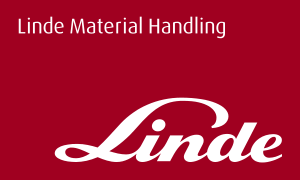30-years development partnership between Linde MH and Porsche Engineering
Design visualises the Linde brand identity

- The current Linde design concept is unmistakably based on designs from the automotive industry.
At Linde Material Handling (MH), truck design has developed over a long period of time to become a key component of the brand. As early as 1985, the business achieved its first recognition in the shape of an iD Design Award for the good design of its 351 diesel truck family. To date, almost twenty further prizes have followed for very diverse range of truck models. Certain factors have continued to define the image of Linde trucks over the years: revolutionary technical vehicle concepts, customer benefits and the partnership with Porsche Engineering, which enters its 30th year this year.
This partnership with one of the world’s most prestigious design service providers runs through the entire development process from the concept phase to the development phase, including design planning, right up to finalisation and production optimisation. At Europe’s largest truck manufacturer, there is no demand for design elements that do not have relevant benefits or superficial style. “We much prefer the philosophy of ‘form transports function’. The design should visualise the technical and ergonomic qualities of Linde industrial trucks and make them come alive”, says Ralf Dingeldein, Vice President of New Trucks at Linde Material Handling. “The driver and his workplace are the focus of this process; the driver should have a comfortable feeling of space, optimum visibility, intuitive operating functions and convenient access and exit points.”

- The design of Linde industrial trucks contributes significantly to brand identity. In this regard, the technical concepts and customer benefits always take centre stage. Implementation is completed with long-time development partner Porsche Engineering.
Each product sends a visual message through its design concept. This applies for forklift truck in the same way as for sports cars. “For example, the dynamic, low silhouette of the truck with its long wheelbase and characteristic rear suggests comfort and performance, and means that the driver does not sit on the truck, but is protected inside it”, emphasises Dingeldein. The external and internal appearance of the Linde industrial truck has been subject to a noticeable process of evolution. If the shapes and contours up to the introduction of the 39x diesel and LPG truck family in 2002 could be considered soft, they have since been sharpened. And this design characteristic has since run through all industrial trucks introduced from the Linde H100 to H180 heavy trucks to the Linde R14x reach truck, and from the Linde T20 SP pallet truck to the new Linde K very narrow aisle truck. They all have a distinctive V-shape with a sloping rear. Since the introduction of the Linde E20 to E50 electric forklift trucks, a dark grey element on the side of the trucks with the Linde logo has in recent years become established as another design characteristic typical of Linde, with a high level of recognition. It ensures that the white lettering is also easy to read from a distance, even where special bright colours are used. At the same time, it draws attention to the entry point and helps to balance the overall proportions and alignment of the truck. The current Linde design concept is unmistakably based on designs from the automotive industry.

- At the start of each design process, two-dimensional sketches are made of the new Linde industrial truck.
At the start of a design process, there is always a brainstorming period involving two-dimensional sketches. This brainstorming period is followed by a period of collaboration between design engineers and designers, during which the truck concept is further developed and becomes more detailed, resulting in a 1:1 scale model. Development steps, technical feasibility and the influence of these factors on design are tested on an ongoing basis using prototypes, with a focus on a consistent overall concept for the design model or prototype. The final, optimised design is then scanned and prepared as two-dimensional data on the computer for tool making.

